Text
Social Media When Disaster Strikes
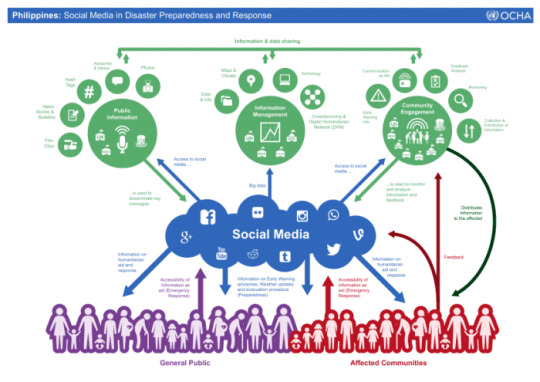
[Source: https://reliefweb.int/report/philippines/philippines-social-media-disaster-preparedness-and-response-15-july-2015]
Social media is an Internet-based application that enable people to communicate and share resources and information. The emergence of this new communication channels represents an opportunity to broaden warnings to diverse segments of the population in times of emergency. These technologies have the potential to prevent communication breakdown through reliance on just one platform and thereby to reinforce the diffusion of warning messages but also present policy makers with new challenges.
What are the uses of social media in an emergency situation?
Social media can be used is spreading information and receive user feedback via incoming messages, wall posts, and polls.
Systematic usage might include: 1) using the medium to conduct emergency communications and issue warnings; 2) using social media to receive victim requests for assistance; 3) monitoring user activities and postings to establish situational awareness; and4) using uploaded images to create damage estimates, among others.
[Source: Bruce R. Lindsay (2011), “Social Media and Disasters: Current Uses, Future Options, and Policy Considerations” / Wendling, C., J. Radisch and S. Jacobzone (2013), “The Use of Social Media in Risk and Crisis Communication”, OECD]
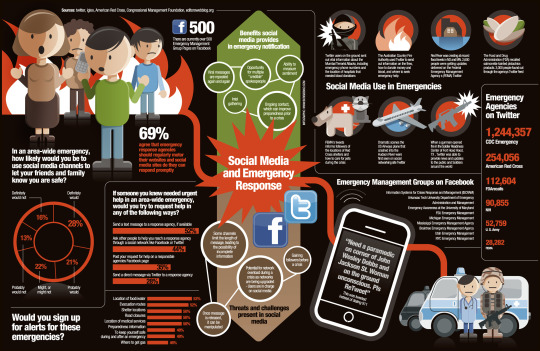
[Source: https://healthstandards.com/blog/2012/04/17/tweets-of-the-living-dead-social-media-spreads-awareness-during-disasters/ ]
Social media has undoubtedly altered the world operates. The rapid and vast adoption of new media platforms have changed the way people relate and communicate ith each other in the social, economic, and political arenas.
How social media helped families, social workers, and the government in discerning information during calamities?
During calamities, social media greatly help us. It gives us the opportunity to connect with our loved ones, gather and spread information, notify our close friends and families about our safety.
Let’s take Facebook’s Safety Check for an example:
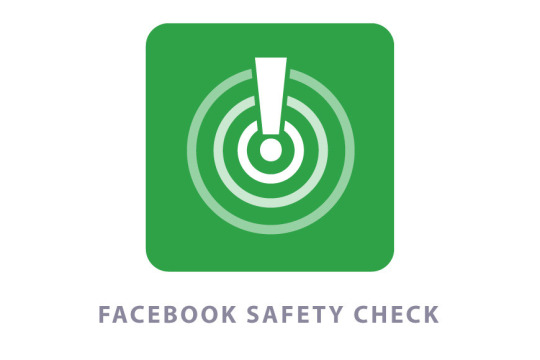
[Source: https://mariabarcelona.com/tag/safety-check/]
Facebook activated its special feature—Safety Check—which helped friends and families locate their near and dear ones.
By using this particular feature, users close to the site of the disaster can mark themselves safe and notify their friends. Besides this, Safety Check also urges other users to indicate when people they know are safe.
The feature was developed by Facebook after its engineers in Japan developed the Disaster Message Board to help people make contact during and after the 2011 Tohoku earthquake and tsunami.
Social Media Use: Typhoon Ulysses Struck Philippines
There’s no denying that social media has its pros and cons. However, the recent typhoon Ulysses proved that it’s a really powerful platform for spreading the word out there.
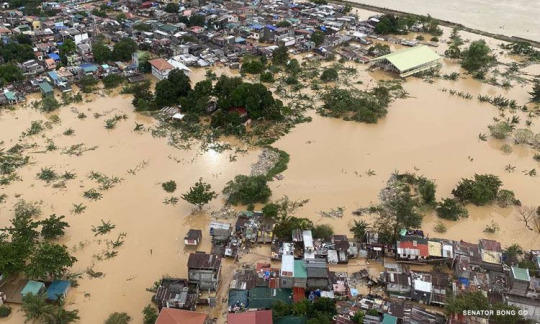
[Source: https://cnnphilippines.com/news/2021/3/3/Australia-P630-million-investment-PH-six-year-SHIELD-initiative.html]
People living in Metro Manila, Central Luzon, Calabarzon, and other parts of the Philippines affected by the Typhoon have resorted to social media, particularly Facebook, to share updates about their situation.
More importantly, affected Filipinos are posting requests for rescue as they are stuck on their roofs after the flood overwhelmed their homes. Most of them accompanied their post with the hashtag #RescuePH, which has become a trending topic on Twitter.
Many posts include people taking pictures of their flooded streets while they are on their roofs, pleading for help and rescue, especially since most of them have children, the elderly, or someone suffering from illness.
The posts also include their full address and landmark so rescuers can get to them as fast as possible.
What’s more interesting here is, Filipino’s “bayanihan” culture was expressed just by simply sharing the post of someone in need, so their situation can be heard by the authorities as fast as possible.
Posting on social media also helps local government units to monitor the situation of their constituents.
Due to the extreme weather conditions, the government — and even essential service providers like power and telco companies — resort to social media to disseminate updates to the people.
Social media played a huge role in disaster response during the recent calamities in the Philippines. Posting critical information to Facebook and Twitter provides not only an additional channel for reaching citizens who are already following your community’s social media presence, it enables citizens to share your message with their own followers, helping to extend the reach of your message to others in your community. Here are some contribution made by social media during crises:
1. Communicate needed resources.
2. Locate friends and family.
3. Allow individuals to make requests for, or offers of, equipment resources.
4. Facilitate volunteer inquiries.
5. Triage location recovery needs.
6. Communicate the coordination of supplies such as fresh water depots, shelter, and clothing resources, and charging stations.
Present Vs Past
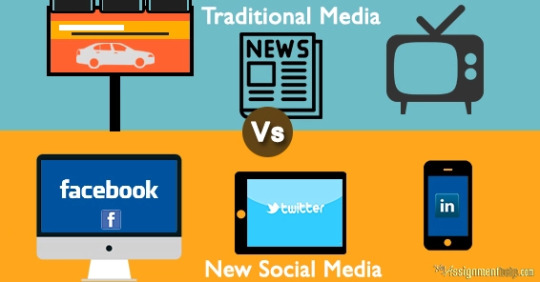
[Source: https://myassignmenthelp.com/blog/traditional-media-versus-new-social-media-differences-impact-and-outcome/]
Way back before media such as TV, radio, and print are the only way of getting information during calamities. It is the only way we can get information because technologies where only limited. But now that we have social media, it makes even easier to be informed and be aware of the possible calamities and what is happening in every corner of the world. Let’s see the difference between social media and the traditional media (TV, Radio and print):
1. Social media reaches a maximum audience, while traditional media’s audience is generally more targeted.
2. Social media is versatile (you can make changes once published), whereas traditional media, once published, is set in stone.
3. Social media is immediate, while traditional can be delayed due to press times.
4. Social media is a two-way conversation, and traditional is one-way.
5. Social media often has unreliable demographic data, but traditional media’s is more accurate.
[Source: https://apps.prsa.org/Intelligence/Tactics/Articles/view/11445/1124/Social_vs_Traditional_Media_Has_the_Battle_Already#.YGqCIegzY2w]
Conclusion
When used during an emergency, social media can help expand the reach of your message due to social sharing and the vast number of citizens who actively utilize the platforms. It can serve as an open communication channel for residents to respond back, ask questions, and provide updates. In a nutshell, social media is a powerful tool of communication during calamities.
1 note
·
View note
Text
“Kapayapaan” by Tropical Depression
One of the most awesome Tagalog songs, made and written originally was “Kapayapaan” by Tropical Depression, it means Peace. They made this song for the Filipino people who are in deep of fighting and killings around the country and they wanted to let the Filipino people to understand the lyrics and feel the breeze of its relaxing and peaceful tone.
When I first heard this song “Kapayapaan,” I liked it. I like it because it just a simple song but has a flowery meaning. I like its beat that if you heard it, it will make you dance and enjoy the song. It looks like the song is encouraging us to dance with one another, no hate, no bad vibes, just happiness. Even when we came from different culture, different country, and different tradition, we have just one world. Making it a peaceful one is on our own hands. This song reminds us that we have only one world, we need to be in good terms to one another.
I chose this song to feature in my blog as I wanted to share the meaning of it to another people. I want to let them know that even it's impossible to make one country in a very peacefully way of life but, it will surely happen if we make it happen. This is all in our hands, our own decisions, to choose what will be better for the each of us. Freedom, peace, and happiness, these are on our own choices.
1 note
·
View note
Video
tiktok
@diannarosevico28
♬ Story Time - 11 Acorn Lane
4 notes
·
View notes
Text
Six Uncommonly Used Filipino Words
While the time is passing by, some words are being forgotten. Uncommonly used words are slowly fading from our culture because most people are engaging in foreign language and dominating our own. Now that we still know those rare words, let us continue using it so that the next generation will know how vast our culture are. So here are some words that are infrequently used.

1. Batid
Definition: alam, nauunawaan o natitiyak na totoo o tunay
Example:
Batid ko ang pighati mong nararamdaman ngunit kung patuloy kang magmumukmok at dadamdamin ang mga nangyari, lulunurin ka lang ng mga ito hanggang sa hindi mo na malaman kung paano ka babangon.
2. Sapantaha
Definition: kutob, hinala, agam-agam, hula, pag- alala at hinala
Example:
Maraming mga tao ang nagtatalo o hindi nagkakasundo sapagkat sila ay nagpapadala sa mga sapantaha, pinaniniwalaan kung ano ang kanilang nalalaman kaya lumulubog ang salitang katotohanan.
3. Dalisay
Definition: tapat, malinis, puro, at wagas
Example:
Karamihan sa mga tao ay bumabase sa panlabas na itsura, pumapasok sa isang relasyon sa kaparehong dahilan at sa huli sila ay madalas masaktan. Kaya dapat bago pa man ang lahat, ang dalisay na puso ang dapat bigyan ng pansin.
4. Marilag
Definition: maganda, kaakit- akit, marikit, kaibig- ibig at kahali- halina.
Example:
Hindi itsura ang basehan upang masabing marilag sapagkat ito ay nakikita mula sa panloob na kaanyuan, hindi lang sa panlabas na kaanyuan.
5. Sulit
Definition: anumang itinakdang pamatayan na dapat lampasan
Example:
Sulit ang mga araw na dumadaan kung pupunuin mo ito ng kasiyahan, hindi masyadong iisipin ang mga problema at lumikilos para maging produktibo.
6. Pagkalinga
Definition: alagaan, bigyang halaga
Example:
Lahat ng tao ay may damdamin, minsan kailangan rin ng tao ang pagkalinga mula sa mga nasa paligid nito dahil bawat isa sa atin ay hindi biro ang pinagdadaanan sa araw- araw.
2 notes
·
View notes